Getting trains into Humboldt County has never been easy. The common shorthand for our region's isolation is "behind the redwood curtain," but those fuzzy-barked spires were never a barrier for rails. In fact, the lucrative lumber from logged old growths is what attracted railroad companies here in the first place.
No, it's the ground beneath our feet that makes train access such a shaky proposition. We live at the rumbly edge of a still-forming continent, perched atop a slow-motion shoving match between massive tectonic plates. Their glacial collisions — punctuated by bone-rattling earthquakes — are constantly reshaping the young mountains of the Coast Range, whose steep slopes are prone to landslides and filled with slippery, clay-rich soil known as "blue goo."
The first and only line connecting Humboldt County to the national rail system was the Northwestern Pacific Railroad, completed 99 years ago as a joint venture between the Southern Pacific and Santa Fe railroads. From Schellville, at the north end of San Pablo Bay, the rails ran north to Healdsburg, followed the banks of the Russian River into Mendocino County and then continued north to Arcata through the Eel River Canyon, one of the crumbliest, most seismically active regions in the world. The challenges were clear from day one. In October 1914, the "golden spike" ceremony celebrating the completion of the line was delayed for hours after tracks in the canyon washed out. It was a sign of things to come.
Winter slides in the canyon are a regular occurrence, which makes rail maintenance expensive. As timber profits dwindled in the 1980s, the line's private operators — first Southern Pacific, then the Eureka Southern Railroad — sought to abandon that stretch. But government officials — especially former Arcata mayor and state Assemblyman Dan Hauser — argued that rail service is essential to the North Coast economy and so the line must not be abandoned.
In 1989, after Eureka Southern had gone bankrupt, the state Legislature established the North Coast Railroad Authority. This new public agency purchased the rail line north of Willits in 1992 for $6.1 million in public funds. Four years later, a consortium of public agencies bought the rest of the line for another $29 million.
The mission of the NCRA, which is run by an unpaid board of nine directors representing Marin, Sonoma, Mendocino and Humboldt counties, is to maintain the rail infrastructure along its 316-mile corridor to meet the region's freight and passenger needs. There's just one problem:
"The NCRA is flat broke!" says Director Bill Kier, who's soon leaving the area and so resigned from the agency board two weeks ago, after representing Humboldt County for almost two years. "The NCRA is not only broke," he elaborates, "but it's deeply in debt."
When the rail authority was created, a companion bill that would have funded the agency was vetoed by then-Governor George Deukmejian. It's a classic example of that California specialty: an unfunded mandate. On its own website the NCRA marvels at its continued survival as an agency, calling it "a miracle." The rail it's supposed to maintain is another story. During severe storms in the winter of 1996-97, a section of line in Sonoma County washed out and operations ceased. In 1998 the Northwestern Pacific became the first railroad in U.S. history to be shut down by federal regulators for chronic safety violations. Rail cars parked on the line have remained stranded there ever since.
Meanwhile, the line through Eel River Canyon has continued to deteriorate. Gravel has washed out from underneath, leaving sections hanging in midair. Portions of concrete tunnels have crumbled and been knocked down by vandals. Stranded rail cars that date back to the 1964 flood rest in the riverbed amid plants and rushing water. Here and there, rusty rails jut like harpoons from canyon hillsides. All told, the northern stretch of line looks like wreckage from a lost civilization.
The southern section has fared better, thanks in part to a 2006 contract with private rail operator Northwestern Pacific Co., led by CEO John Williams. Through a public-private partnership with the NCRA — plus more than $40 million in public funds — Williams' company resumed freight service in Marin and Sonoma counties two years ago, hauling mostly feed and grain, wine, lumber and gravel.
Last Tuesday the NCRA looked poised to win a major court battle when a Marin County judge issued a preliminary ruling that said federal law preempts state environmental regulations when it comes to railroad operations. That judgment would have pulled the rug out from under a pair of lawsuits filed by local environmental groups Friends of the Eel River and Californians for Alternatives to Toxics (CATs). But the next day, lawyers for those groups made counter-arguments, and the judge said he needed more time to deliberate. He has until mid-July to make a final decision.
While the NCRA fights legal battles and works to restore service on the southern end of the line, agency officials say they've given up on rebuilding the tracks through the Eel River Canyon anytime in the foreseeable future. "What is abundantly clear," NCRA Executive Director Mitch Stogner told the Journal recently, "is that trains through the canyon aren't going to happen in our lifetime." And yet the agency's mandate to maintain the entire line remains intact, and local officials say the NCRA has been sending mixed messages about its intentions in the Eel River Canyon for years.
If the NCRA succeeds in getting out from under the expensive environmental lawsuits, will its message change again?
And in the meantime, what do we have here in Humboldt? A valuable publicly owned right of way, for one thing, and a lot of different opinions about what should be done with it. Trail advocates are clamoring for access between Arcata and Eureka and east to Blue Lake on the old Annie & Mary Line (which NCRA also holds). Members of the Timber Heritage Museum, among others, want to see a tourist/excursion line around the bay. Fishery activists want permission to remove mothballed infrastructure that's blocking fish passage in the Eel. And private operator NWP Co., which holds a 100-year lease to run trains on the entire line, hasn't given up on rebuilding through the Eel River Canyon.
"It depends entirely on the demand for rail service in that corridor," CEO John Williams said in a phone interview earlier this month. "And I don't think Mitch Stogner is qualified to say there will never be a demand for the service in the rail corridor again."
Perhaps the only thing that everyone agrees on is that the right of way must be preserved. But who should get to use it? And for what? And if we are truly cut off from the southern end of the line, does Humboldt County have any use for the NCRA anymore?
The Agency
The NCRA is a public agency with a legislative mandate to connect Humboldt to outside markets via rail, but it has no money or intention to do so (assuming you take its executive director's word for it). Meanwhile its mission — along with the requests of NWP Co. — is interfering with trail-building and fish restoration efforts. Even for people who advocate tourist and excursion trains, that raises a question. Are Humboldt's interests best served by a debt-ridden state agency that's focused on running trains in Marin and Sonoma counties?
Humboldt Bay Harbor Commissioner Mike Wilson doesn't think so. "If it's true that the NCRA is not going to deliver service from the Bay Area to Humboldt County in our lifetime, then the structure of the NCRA is probably not the most efficient way to manage that asset," he said, referring to the right of way. "If Humboldt County had direct control of the asset, I think we would be more likely to derive value from it, whether it's from a tourist train, cargo, a passenger rail, trail or any other use."
After the last meeting here in Humboldt, NCRA Director Bill Kier resigned so that he and his wife can move back to Marin County and be closer to family. In an interview with the Journal he agreed with Wilson. "It's unclear to me why we should continue an agency whose mission is inoperable in our lifetime," he said. "Humboldt County interests, beginning with the Harbor District, are perfectly competent to resurrect rail service in their county."
Kier suggested that if the four counties represented in the NCRA agreed, then the state legislature would be willing to take another look at the act that created the agency and possibly split it into separate sections with separate jurisdictions. For example, he said, the federal Bureau of Land Management has said it has suitable authority to manage a public trail through the Eel River Canyon, which many have suggested. (Some ranchers along the way would probably object, however.)
Dan Hauser, the former assemblyman who helped create the NCRA, agreed that it would be possible to transfer the rights of way to other agencies, assuming they reimbursed the state for its investments, but Hauser doesn't think that's necessarily a good idea. He believes that the NCRA is still perfectly suited to respond to local needs and desires, though he acknowledged that he hasn't reviewed the agency's finances lately.
Shortly after Humboldt County Supervisor Estelle Fennell joined the NCRA board, Kier wrote her a series of briefing notes to get her up to speed on the agency's history, finances and the various issues it's facing. He didn't sugarcoat it:
"NCRA has been digging itself into an increasingly deep financial pit since its creation 20-plus years ago," Kier wrote. "It is now nearly $8 million in debt to a slew of creditors. There are no prospects — none that I can see — for NCRA righting itself."
No one with the NCRA has previously acknowledged the financial situation quite so bluntly, but a brief look at the agency's books (which Kier also sent to Fennell) shows that he's right: On paper the agency has $33.6 million in assets, but those are fixed assets — meaning that, unlike liquid assets, they're tied to physical property and can't easily be used to pay bills.
Kier's note spelled out the implications: "If every creditor demanded payment within one year, as they are entitled to do, NCRA would have to come up with $7.8 million in liquid assets. Impossible."
Through the first half of the 2012-13 fiscal year the NCRA lost more than $50,000, and as of last November it owed more than $20,000 to its accountant, $250,000 to its consulting engineer and more than $284,000 to its legal counsel.
Meanwhile, out of $926,417 of actual total expenses in fiscal year 2011-12, the NCRA spent almost 20 percent ($185,805) on salaries for just two people — Stogner and an executive assistant. On top of that the agency sent $63,867 to CalPERS for the two employees' retirement benefits and spent another $19,998 on Stogner's health insurance benefits.
The NCRA has historically had three main sources of income: fees collected for access along its right of way (for cables, telephone wires and the like); payments on roughly 35 rail cars that it leases out through the Boston Consulting Group; and the lease with operator NWP Co. The returns on rail car leases have been dwindling because the cars are depreciating. And the lease with NWP Co. hasn't generated a payment since July 1, 2012.
From October 2006, shortly after the signing of the lease, until March 2011 the railroad company made advance lease payments of $20,000 per month to the NCRA — part of a memorandum of understanding designed to help the NCRA pay its bills. NWP Co. then stopped making payments altogether until a new lease amendment was negotiated in June 2011 at which point the railroad company briefly resumed making payments. This time around, though, it deducted a large percentage each month as reimbursement for the earlier "advance" payments. In October 2011 it again stopped making payments, offering instead to loan the NCRA $15,000 per month, with interest. Last July, those loans ceased, too.
The NCRA board has agreed to all of this because, under the terms of the lease, it has no right to demand anything more — not until NWP Co. starts generating a large profit.
Bernard Meyers, one of two NCRA directors from Marin County, calls the lease "terrible." He and other critics allege that the "Operator Agreement" with NWP Co. all but gave away the store. For one thing it gives the private operator the unilateral ability to extend the lease for up to 105 years. And here's the money hitch: It also says that the company doesn't have to make any lease payments to the NCRA unless and until it has a year with $5 million in net profits — which could conceivably never happen.
While NWP Co. is responsible for normal maintenance on the sections of rail where it's running trains, the lease imposes no requirements on the company to do rehabilitation, restoration or storm damage repairs — all of that falls on the shoulders of the scantily funded NCRA.
The Journal called NWP Co. CEO John Williams on Monday afternoon to ask about the lease. He said, "I have no comment on that, thank you," and hung up the phone.
Meyers and other critics say there's reason to be suspicious about the lease's origins. He alleges that the two main negotiators for NWP Co. were Williams and the company's general counsel, Doug Bosco. That's the same Doug Bosco who served eight years in Congress representing Humboldt and the rest of the then-First Congressional District. In the 1992 House banking scandal, Bosco was called out by the House Ethics Committee, along with 21 other House members, for keeping his government checking account overdrawn for months at a time. He went on to establish himself as a behind-the-scenes political powerbroker with investments in gravel, timber, development — and NWP Co.
On the other side of the 2006 closed-door lease negotiations, Meyers says, were NCRA's legal counsel, Chris Neary, and its executive director, Mitch Stogner. That's the same Stogner who served eight years working as Bosco's chief assistant during his time on Capitol Hill. In 2010, Meyers wrote a memo to Marin County's board of supervisors in which he theorized, "Perhaps this is the inevitable outcome when an obscure public agency is given the opportunity to draw public funds without proper checks and balances."
Neary disputes Meyers' allegations, saying he and Williams negotiated the lease without any involvement from Bosco or Stogner. Other NCRA directors, along with Stogner, defend the lease, saying that NWP Co. was the only qualified bidder for what was a risky endeavor.
Due to years of financial mismanagement, Caltrans has labeled the NCRA a "high-risk" agency, meaning it cannot be a lead agency for federal funding purposes. Caltrans audited the NCRA in 2009 and recommended it remain labeled "high-risk" because of its financial instability and "an accounting system not in accordance with Generally Accepted Accounting Principles."
Meanwhile, with only a small southern segment of the right of way in regular use, the NCRA has done the groundwork for trains to venture as far north as Willits — should that ever become profitable. Disputes over the sufficiency of that groundwork have landed the NCRA in court.
The Lawsuits
Friends of the Eel River and Californians for Alternatives to Toxics (CATs) filed separate suits against the NCRA two years ago, challenging a taxpayer-funded environmental impact report on resumed rail service between Schellville and Willits. Both groups claim that the report violates the California Environmental Quality Act (CEQA). Friends of the Eel argues that the report should have addressed all 316 miles of NCRA's line, rather than stopping at Willits. CATs says the report also fails to address the toxins — creosote, lead, dioxin, etc. — that could be released when repairing old tracks and ties.
The NCRA sought to sidestep the challenges altogether by claiming CEQA has no bearing. Rail operations, its attorney argued, are under the purview of the federal Surface Transportation Board, which granted the agency permission to resume service back in 2007. With his preliminary ruling last week, Marin County Judge Roy O. Chernus agreed. But lawyers for the two environmental groups showed up the next morning to argue that the NCRA made commitments to follow state environmental laws anyway and sealed those commitments by accepting state money.
The environmental report and related studies cost roughly $3 million, which was paid by the California Transportation Commission with funds from the state's Traffic Congestion Relief Program. At the last NCRA board meeting, held April 10 at the Humboldt County courthouse, Leishara Ward, an associate transportation planner with Caltrans, told the board that if it backs away from the EIR, the state may ask for that money back.
Leaders from several environmental groups, including the two suing the NCRA, also stood up to criticize the agency. Even one of the board's own directors, Meyers, said his colleagues should stand by the EIR because "promises count for something."
But NCRA staff and other board members argue that the money wasn't wasted because the EIR has value as an "informational document," even if it carries no legal weight.
In a follow-up phone interview, NCRA head Stogner acknowledged that his agency made a commitment to other agencies to complete an EIR — agencies such as Caltrans, the Sonoma Marin Area Rapid Transit (SMART) and the North Coast Regional Water Quality Control Board. "And we've made good on that commitment," he said. "But it was never agreed that this was a condition precedent to train operations."
Caltrans reps beg to differ. Ward, the Caltrans planner, said her agency and the California Transportation Commission have forwarded the NCRA's latest actions to their legal departments. "We look at what they've done and what they propose to do and it just sounds — 'confusing' is the nice word to say it," Ward said.
But if the NCRA believes that the EIR wasn't required, why spend so much time and public money preparing one?
"The answer to your question is we weren't sure" whether the report was needed, Stogner said. He also said that the report was used as the basis for the agency's contract with NWP Co. At the April 10 board meeting, Director Allan Hemphill explained, "We had advice from environmental consultants who said, 'You may not have to do it, but you probably should.'" Chris Neary, the agency's own legal counsel, told a different story last week. "From the very beginning we maintained that we did not have to do an EIR," he insisted. The NCRA did it anyway because other agencies were asking for one and because "we thought it would appease the groups suing us."
It didn't. As Hemphill predicted at the last board meeting, it looks like the issue will ultimately be decided by someone in a black robe.
[Update: The lawsuits were dismissed on May 15.]
The Fish
Another environmental group has been frustrated with the agency lately: California Trout has conducted an inventory of the NCRA's entire line, documenting barriers and potential barriers to fish passage. The group hopes to use grant money to remove some of those barriers in the hopes of restoring native populations of steelhead, chinook and coho.
"Coho and steelhead are on the brink of extinction" in the Eel River, said CalTrout North Coast Area Manager Darren Mierau. The group's No. 1 priority for the Eel is to restore Woodman Creek, a historic channel east of Laytonville that drains a 24-square-mile watershed into the river. The creek mouth was buried 100 years ago by construction of the railroad. The group would like to remove a section of rail and a bridge so it can restore the channel to its original alignment, which would revive 10-14 miles of stream habitat for all three species, Mierau said.
Earlier this year, CalTrout was on the verge of receiving grant funding from the National Oceanic and Atmospheric Administration (NOAA) and American Rivers to complete an engineering design, but the program required a letter of support from the landowner — NCRA. The agency's board was torn on the issue. Directors expressed support for restoring fish habitat, but some worried that approving the project could somehow jeopardize their case with the environmental lawsuits. Plus, the agency's private operator, NWP Co., was insisting that any infrastructure removed for restoration be replaced. Replacing the bridge alone would cost $10 million, according to an engineer hired by the company, and that's well beyond the scope of the grant.
At its March meeting the NCRA board voted 5-4 against approval, and as a result, the grant opportunity was lost.
Mierau was frustrated. "I think they have an obligation to help remedy some of the disastrous consequences that their predecessors wrought upon this river," he said, adding that this particular project is far and away the best opportunity to do that. "And I don't agree with the reasoning they're giving me for not supporting it."
The March meeting was Humboldt County Supervisor Estelle Fennell's first day as a director on the NCRA board (she replaced Clif Clendenen, whom she defeated in last year's 2nd District supervisorial race), and in her first vote she joined the narrow majority in shooting down the project.
"It was a difficult situation," she said in a follow-up interview. As an environmentalist, she said, she's completely behind the effort to restore fish habitat. "I would say that the majority of the board supports that concept, but they're in a difficult spot because of this whole legal thing." Neary, NCRA's legal counsel, advised a "no" vote and Fennell joined four other directors in following his advice.
But Kier, Humboldt County's other representative on the board and a certified fisheries scientist, didn't understand Neary's reasoning. "We've taken the position that we have no plans for resurrecting service through the Eel River Canyon in the foreseeable future," Kier told the Journal. "It seems to me that allowing somebody to take out a chunk of track ... would only confirm that."
Regardless, Fennell and Mierau both say they're optimistic that a Woodman Creek restoration project will eventually be completed. CalTrout recently submitted another funding proposal to California Fish and Wildlife's Fisheries Restoration Grants Program. And the group already has funding and board approval to repair fish passage at the Bridge Creek railroad crossing near Holmes Flat.
Woodman Creek's fate may depend on the outcome of the environmental lawsuits, and on the requests of NWP Co. Scott Greacen, executive director of Friends of the Eel, said, "Over the last few years it really seems to be the operator wagging the agency."
The Trails
Most of the NCRA's right of way around Humboldt Bay runs parallel to busy freeways where cyclists and pedestrians breathe exhaust and risk their lives daily. As year after year goes by with no viable plans to return trains to the line (with the exception of the speeder cars that run short routes across Eureka and the Samoa peninsula), local trail advocates have been eyeing the route with increased desire. (Disclosure: Journal Publisher Judy Hodgson has been active on this issue as a member of the Bay [T]rail Advocates, a group promoting rails with trails.)
The NCRA has never been comfortable with the idea of railbanking. The process, which involves putting a trail atop an out-of-service rail corridor until train service is set to resume, keeps rail rights of way intact. But NCRA's trails policy, adopted in 2009, states that any trail development in its corridors must be compatible with railroad use. As in simultaneous railroad use. In other words, the best local trail advocates could hope for is rail and trail, side-by-side.
But last year, the NCRA showed signs of potentially budging on that position. Responding to a request from the county Board of Supervisors, the agency formed the Humboldt Bay Rail Corridor Committee, an ad hoc group of three board directors who gathered data and opinions about how best to use the corridor.
In November the committee came back to the full board with a report that offered hope to trail boosters. It said that while putting a trail atop the rail does go against official policy, some "clearly defined and strictly limited exceptions" to that policy could be made "without compromising prospects for the restoration of rail service."
The NCRA's consulting engineer examined the line from Eureka north to Arcata and around the bay to Samoa, and he was surprised by the level of deterioration, concluding that there is clearly "a cost of doing nothing." But there would also be significant costs to develop the line, whether for rail or trail — or, most expensively, both.
A team of engineers from Eureka's GHD Inc. found that in order to comply with the NCRA's current trail policy, some tricky engineering would be involved. For example, a trail would have to be cantilevered off the side of the Eureka Slough bridge. Such measures would jack project costs up significantly. The NCRA report estimated that developing rail-with-trail between Arcata and Eureka would cost $18.5 million, compared to just $5 million for rail-to-trail on the same stretch.
Rail projects by themselves wouldn't be cheap either. Members of the Timber Heritage Museum have suggested a tourist/excursion train around the bay, but the NCRA's consulting engineer found that it would cost between $14.2 million and $16.5 million just to get the line between Eureka and Samoa back in working condition.
The costs are daunting all around, but Hank Seemann, the county's deputy director of public works, is optimistic. He said that the proposed Annie & Mary Trail from Arcata to Blue Lake got put on the back burner for a while to work on the Bay Trail, but progress is being made there, too. "You could say it's building momentum," he said.
The Humboldt County Association of Governments, led by Executive Director Marcella Clem, conducted an environmental assessment of the route, and Seemann has been investigating the land deeds along the right of way — a challenging project since some of the deeds date back to the 1880s, when descriptions of property boundaries were often vague and informal. The ownership issue on the Annie & Mary line got complicated when the NCRA learned that the previous owners, Simpson Timber Co., never formally abandoned it. This left a mess that's still being straightened out.
The city of Arcata, meanwhile, recently got CEQA clearance for a trail from the city to the Bracut Lumber yard on Highway 101, though a Coastal Development permit is still required. And the county is working with the city of Eureka and the association of governments on a conceptual plan to reach Bracut from the south. There may be funding available if the trail project is tied to Caltrans' Highway 101 safety corridor project. All in all, a diverse mix of government agencies and community groups is involved in trail development efforts.
"I think the bottom line is everybody's rowing in the same direction now," Seemann said. "I think that's really positive and we can make a lot of progress now."
When it comes to a train connection to Humboldt County, on the other hand, progress is limited to memories and dreams, whether it's memories of the Northwestern Pacific Railroad or dreams of building a new line from scratch by carving a path over the mountains to our east. One is 15 years gone and the other may never come. But today there's a corridor connecting our communities, from Blue Lake to Arcata, around the bay to Samoa and Eureka and south into a beautiful river valley where endangered fish spawn. The corridor is publicly owned.
Which means the public — including the people of Humboldt County — can decide what to do with it.




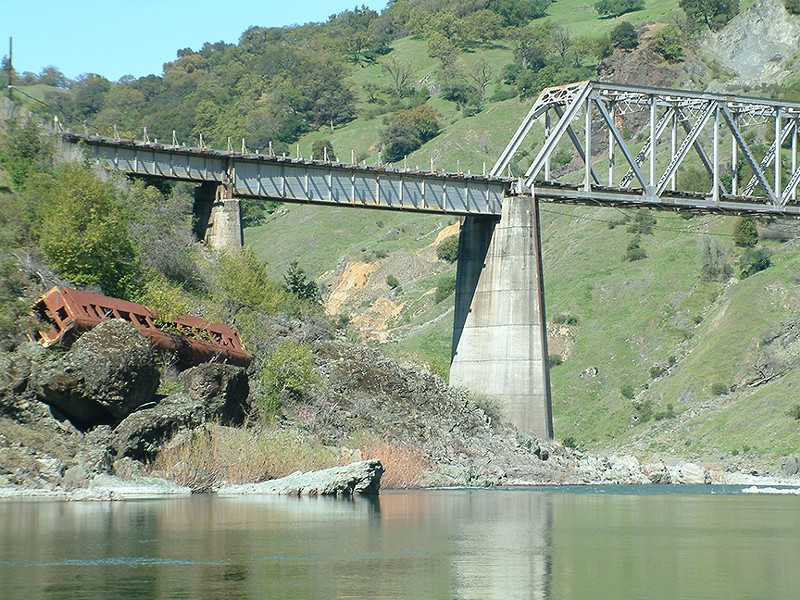

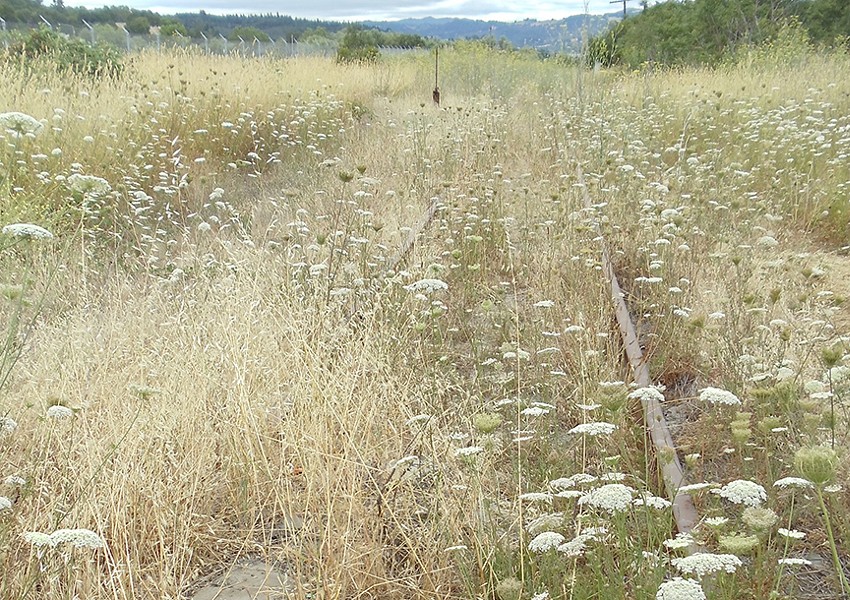
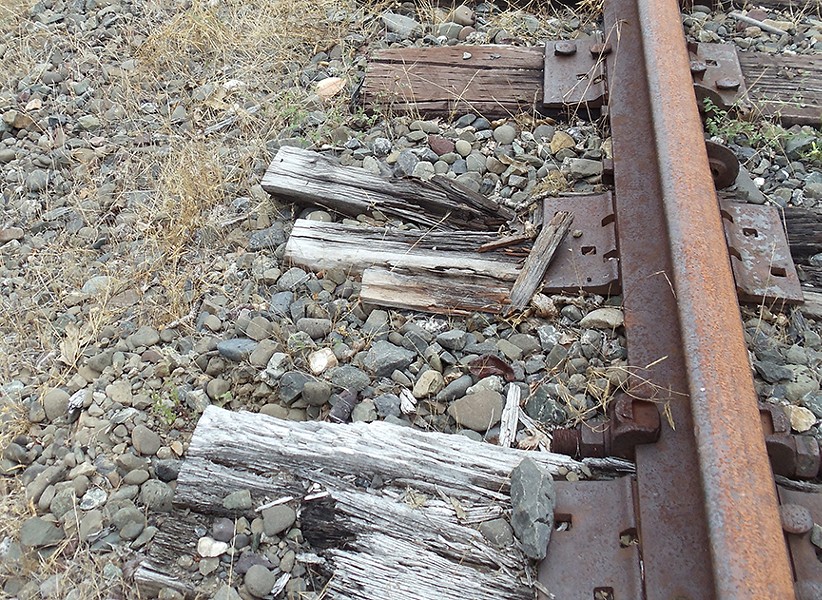
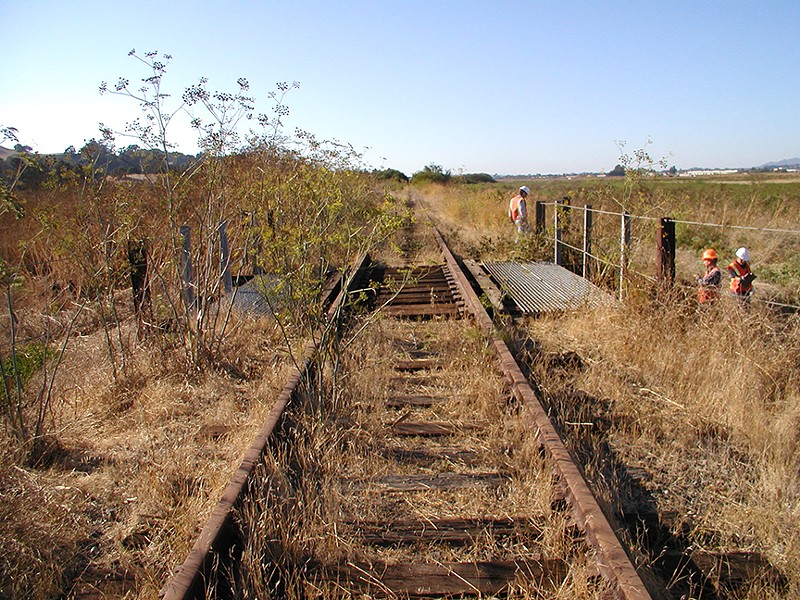
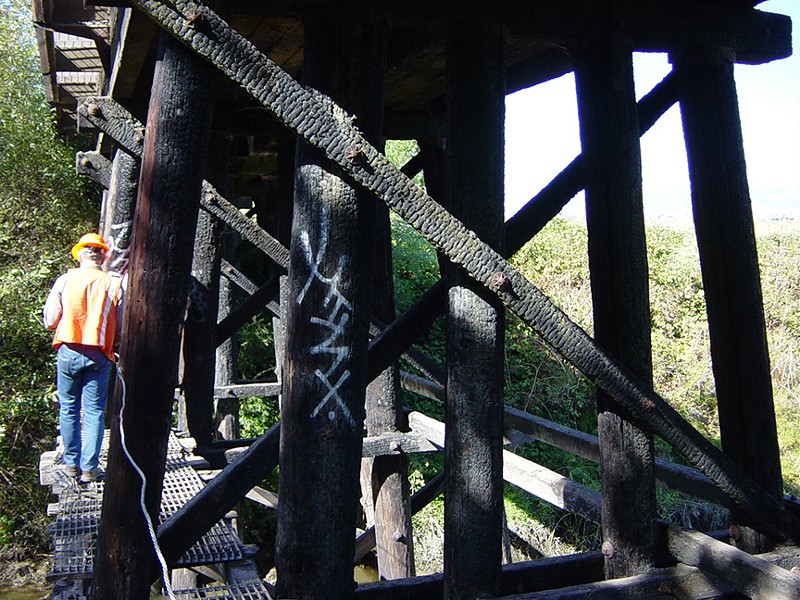
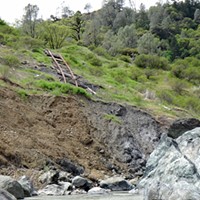

Comments (8)
Showing 1-8 of 8